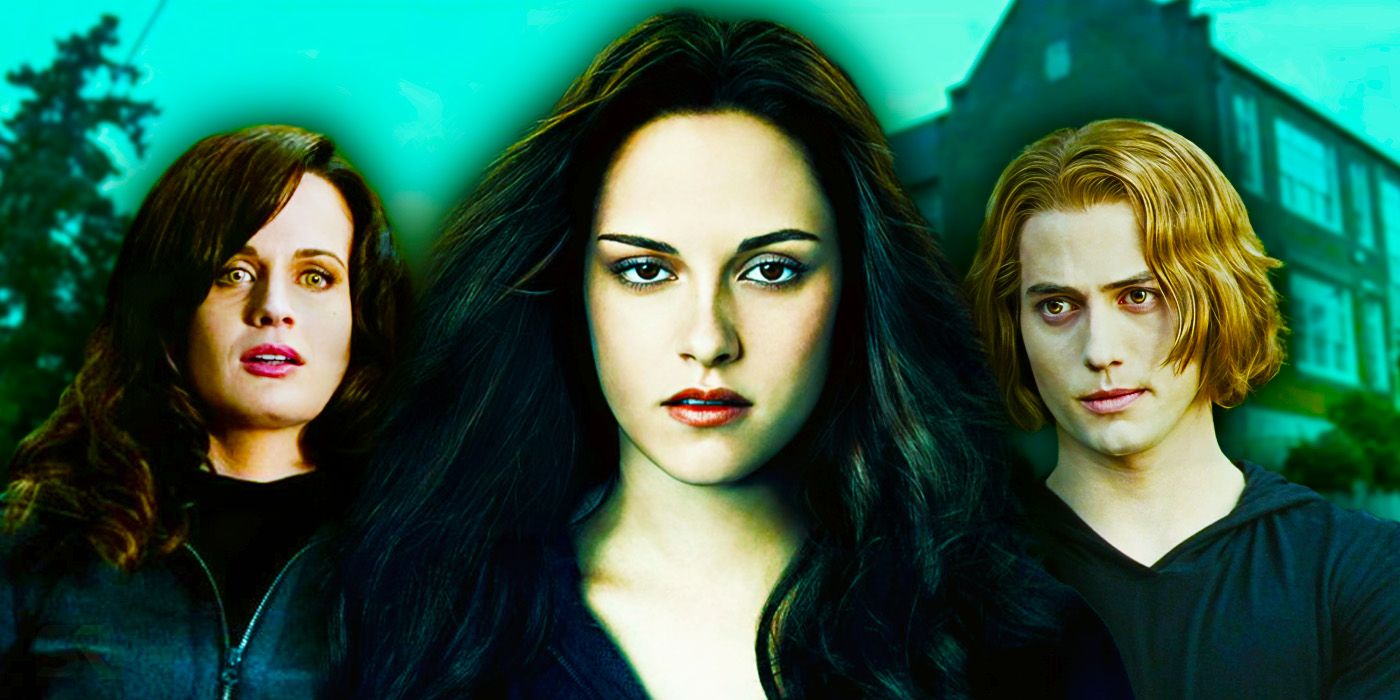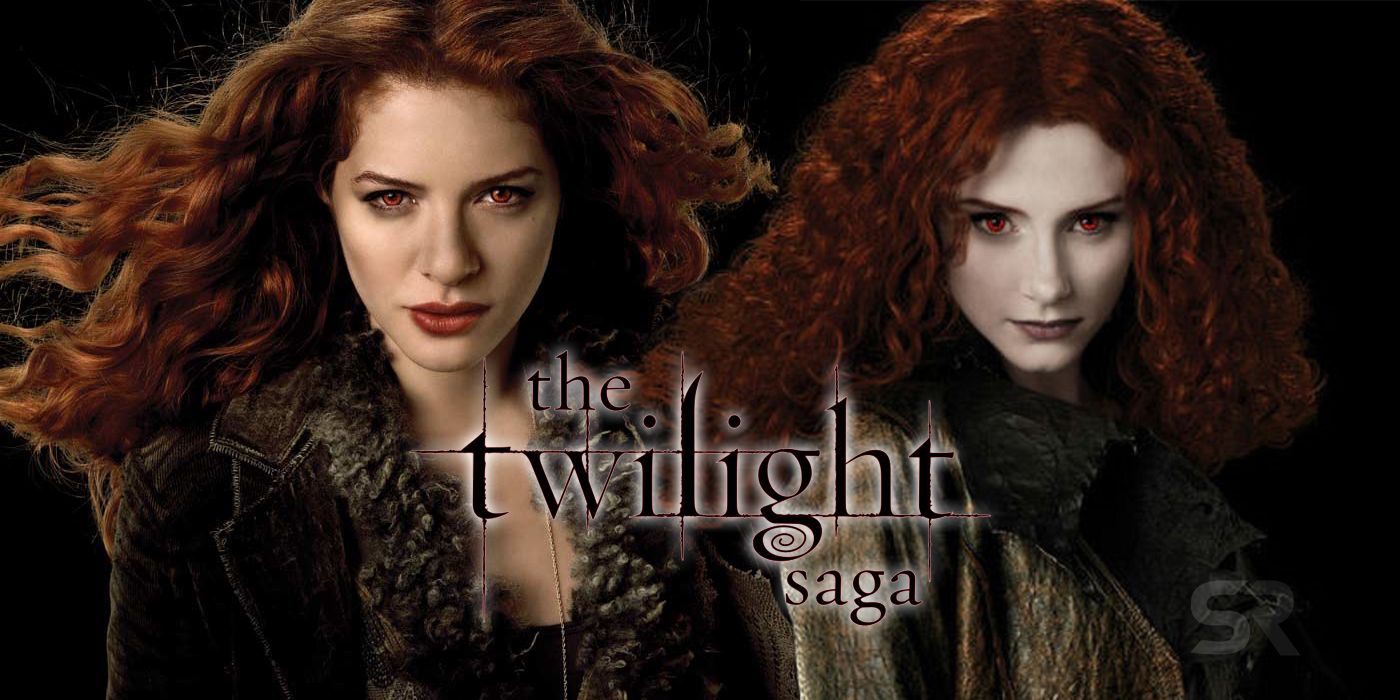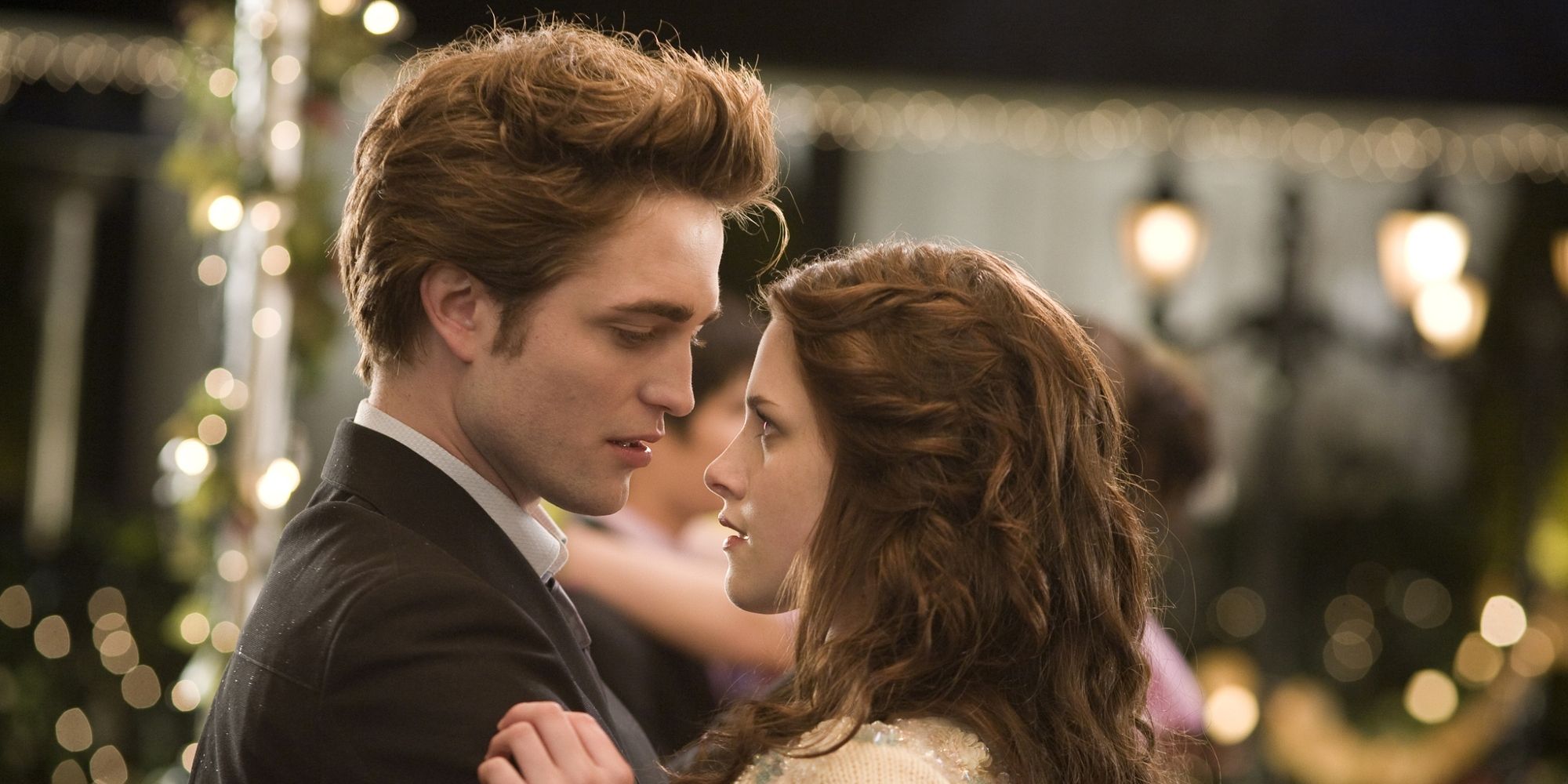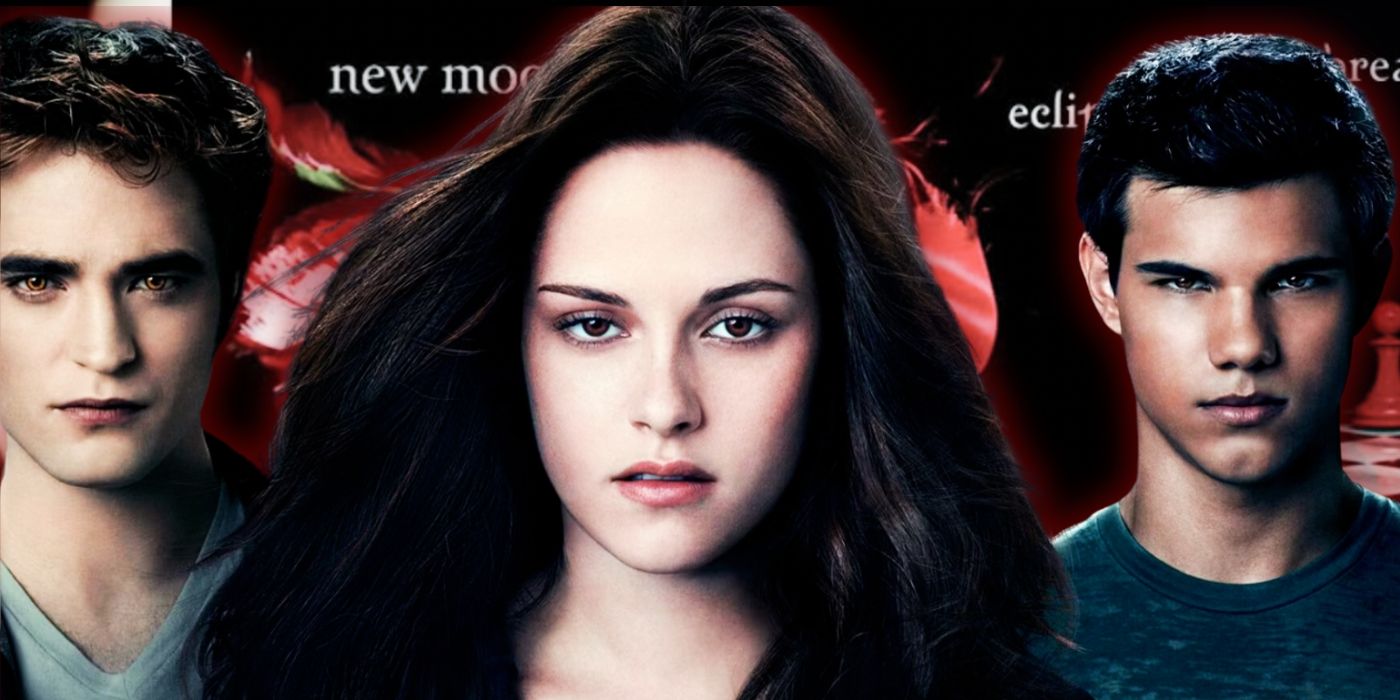Summary
- The Twilight saga titles reflect Bella's emotional journey and the love triangle dynamics between her, Edward, and Jacob in each installment.
- Each title, from Twilight to Breaking Dawn, symbolizes Bella's growth and the challenges she faces in her relationships with vampires and werewolves.
- New Moon highlights Bella's darkest moments, Eclipse marks a turning point in her love triangle, and Breaking Dawn is the light at the end of her dark journey.
The Twilight saga’s titles are never explained in the original novel series or their blockbuster movie adaptations, but they’re secretly a reflection of the character arc undergone by the main character Bella (Kristen Stewart in the movies). Released in 2008, Thirteen director Catherine Hardwicke’s Twilight was a gloomy, grey-tinged adaptation of Stephenie Meyer’s YA sensation the Twilight saga. The hugely successful paranormal novel series told the tale of Bella Swan, an ordinary teenager, and Edward Cullen (Robert Pattinson), the ageless vampire she falls in love with.
Bolstered by a strong cast and a self-aware streak of humor, the Twilight movie adaptations may have flopped with critics but they were a hit with audiences. Although the Twilight series never explicitly addresses this, each of the individual installment titles can be read as a reflection of where the story of Bella is, and where it is heading. The Twilight saga’s titles reflect both Bella’s emotional states throughout the novels and their movie adaptations, and the state of the infamous love triangle between herself, Edward, and the hot-headed, problematic Quileute werewolf Jacob (Taylor Lautner) in each installment.

How Old The Twilight Cast Was Compared To Their Characters
Some of the Twilight cast were a little too old to play their characters, while others were technically way too young to play ageless vampires.
Twilight (2008)
Twilight
Based on Stephenie Meyer’s book of the same name, Twilight follows Bella Swan (Kristen Stewart), who falls madly in love with Edward Cullen (Robert Pattinson), who she soon finds out is a vampire. Falling in love with her at the same time, Edward and Bella must overcome obstacles to preserve their forbidden relationship.
- Director
- Catherine Hardwicke
- Release Date
- November 21, 2008
- Writers
- Melissa Rosenberg
- Cast
- Robert Pattinson , Ashley Greene , Peter Facinelli , Rachelle Lefevre , Elizabeth Reaser , Kristen Stewart , Nikki Reed , Jackson Rathbone , Cam Gigandet , Kellan Lutz , Taylor Lautner , Anna Kendrick , Billy Burke
- Runtime
- 121 minutes
A huge success upon publication and an even bigger hit at the box office a few years later, the original Twilight was a phenomenon that at the height of its considerable fame rivaled the Harry Potter series. The original title comes from the point at the end of the day where it’s neither day nor night, the only time that is home to both vampires and humans traditionally.
Since the infamously sparkly vampires of Twilight aren’t killed by the sun but instead exposed by it, the Cullen clan of the saga resides in the small, gloomy town of Forks. It is perpetual twilight in the small town, meaning Bella is never far from vampires and can fall for Edward despite traditional vampire lore dictating that he and his brood of bloodsuckers couldn’t live normal daytime lives.
The twilight of the title refers to the end of their childhood.
However, there’s also a metaphorical meaning to the title, as well the practical point of the Cullen family requiring twilight to mask their condition. Like so many fictional pairings, Bella and Edward fall for one another at the twilight of their youth. As late adolescents, they are neither considered adults nor children, not yet free to live independently but also not as innocent and in need of protection as children. Here, the twilight of the title refers to the end of their childhood and their inhabiting of the space between adulthood and childhood.
When Meyer originally wrote the series, the Twilight Saga was intended to be a two-book series starting with Twilight and immediately followed by its ending, Breaking Dawn. However, after the success of the first novel, Meyer was contracted to write two sequels that account for the time between the first and last novels.
New Moon (2009)
The Twilight Saga: New Moon
The second film in the Twilight film series, New Moon follows Bella Swan (Kristen Stewart), who is thrown into a deep depression when he vampire boyfriend, Edward Cullen (Robert Pattinson) breaks up with Bella and moves away after an incident convinces him that he and his family and dangerous to her. As she struggles to cope with her depression and begins forming a closer bond with her werewolf best friend Jacob Black (Taylor Lautner), Bella begins to be pulled deeper into the world of the supernatural despite both Jacob's and Edward's attempts to keep her safe.
- Director
- Chris Weitz
- Release Date
- November 18, 2009
- Writers
- Melissa Rosenberg
- Cast
- Kristen Stewart , Taylor Lautner , Robert Pattinson , Billy Burke , Ashley Greene , Anna Kendrick
- Runtime
- 130 minutes
There’s an obvious double meaning to the first Twilight sequel’s title, as New Moon introduces werewolves into the world of Twilight. However, as well as the obvious pun on Jacob’s lycanthropy, New Moon also refers to the darkest point in the lunar cycle.
New Moon’s reference to the darkest point of the lunar cycle underscores that Bella is at her most hopeless.
Despite Catherine Hardwicke being replaced by American Pie director Chris Weitz for the movie adaptation of New Moon, the sequel is significantly tonally darker than the more visually gloomy first film in the series. Despite featuring more humor and a warmer color palette, New Moon also centers its narrative on scenes of Bella at the lowest point she reaches in the entire series when Edward leaves her alone with no explanation for his absence.
As such, New Moon’s reference to the darkest point of the lunar cycle underscores that Bella is at her most hopeless and depressed when Edward leaves. Although his presence in her life brings danger, it’s also the only thing that keeps her going, leaving New Moon as the darkest installment of the series even though it is less violent than later movies.
Fortunately, Bella's overwhelming depression is eventually lifted by a new arrival in her life as this sequel also sees the introduction of the third part of Twilight's love triangle, Jacob. The darkest of Bella's depression lifts as she meets Jacob, and as he's a werewolf the end of her new moon is contrasted with the start of his transformation, with the character's condition giving the title its double meaning.

What Happened To The Original Victoria From Twilight?
The Twilight Saga: Eclipse had a very different Victoria to the one that viewers knew from Twilight and New Moon. Here's what happened.






